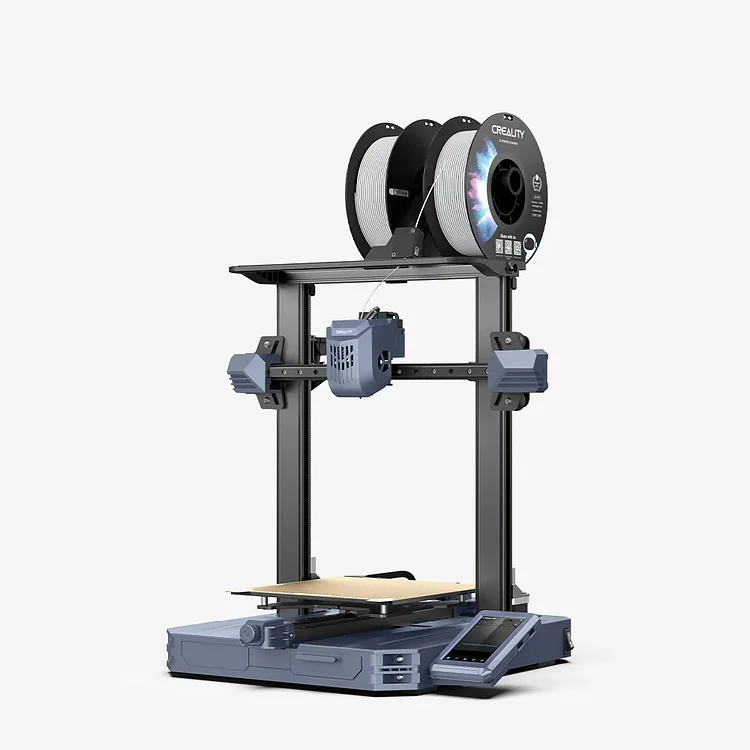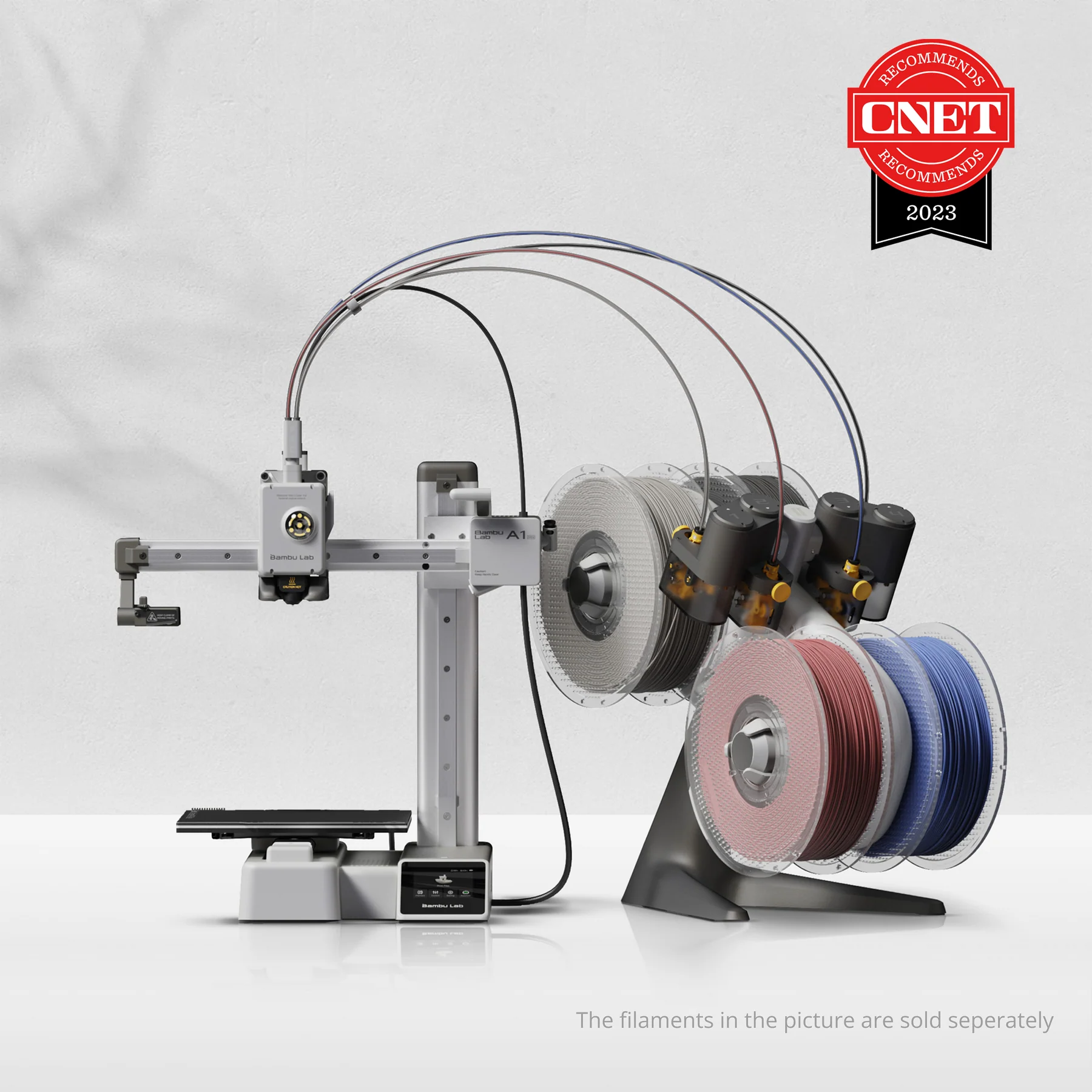Compare CR10 SE vs A1 Mini
Comparison between the best 3D printers
Choose the best 3D printer at the best price. The cheapest 3D printers are here.
Buy a 3D printer here with 3D Fila.
 |
 |
|
| Model | CR10 SE |
A1 Mini |
| Printing Material | Filament | Filament |
| Buy Filament for Creality CR10 SE | Buy Filament forBambu Lab A1 Mini | |
| Estimated price | $386,00 | $549,00 |
| Manufacturer | Creality | Bambu Lab |
| Release Year | 2023 | 2023 |
| Print Volume [mm] | 220x220x265 | 180x180x180 |
| Printer Size [mm] | 490x470x625 | 315x347x365 |
| Weight [kg] | 6,9 | 5,5 |
| Power Loss Recovery | NO | YES |
| Enclosed printer | NO | NO |
| Bed Leveling | Automatic | |
| Filament End Sensor | NO | YES |
| Bed type | Heated | |
| Power supply system | Direct Drive | Direct Drive |
| Standard nozzle | 0,4 | 0,4 |
| Maximum Nozzle Temperature [°C] | 300 | 300 |
| Maximum Bed Temperature [°C] | 110 | 80 |
| Maximum printing speed [mm/s] | 600 | 500 |
| Filament holder | YES | YES |
| Camera for supervision | YES | YES |
| Recommended filaments | PLA, PETG, PET, TPU, PA Wood, ABS, ASA, PA, PLA-CF | PLA, PETG, TPU, PVA |
| Recommended slicers | Creality Print, Cura, Simplify3D, PrusaSlicer, Orca Slice | Bambu Studio, Super Slicer, Cura, Prusa Slicer, Orca |
| Maximum Resolution [mm] | 0,1 | 0,1 |
| Processor | 32-bit Silenciosa | |
| Display | Touchscreen 2,4'' | |
| Power Supply | 150 W | |
| Connectivity | USB, Wifi | Wifi, Bambu bus, Cartão SD |
| Operating systems | Windows, Linux, Macbook | Windows, Linux, Macbook |
| Date of registration in the system | 2024-07-02 | 2024-04-10 |
| Release date | 2023 | 2023 |
| Extra features | The Creality CR10 SE stands out for its printing speed of up to 600 mm/s, easy and intuitive assembly, direct extruder with double gears, hotend with hardened steel nozzle and ceramic heater, automatic leveling with CR-Touch and pressure sensor, and use of Creality OS firmware based on Klipper, with automatic input shaping calibration. It also includes Wi-Fi connectivity, a filament out-of-stock sensor and a robust structure with linear rails on the X and Y axes. | The Bambu Lab A1 Mini stands out not only for its impressive speed and automatic calibration, but also for its multi-color printing capability thanks to AMS Lite. This innovative system makes multi-color printing easy, making it accessible to everyone. AMS Lite, specific to the A1 Mini, supports up to four different materials simultaneously, providing creative freedom without complications. With comprehensive sensors for energy monitoring and recovery, a camera for timelapses and Wi-Fi control, the A1 Mini and AMS Lite together offer an intuitive and advanced 3D printing experience, ideal for materials such as PLA, PETG and TPU, and designed for simplicity and fast maintenance with quick-change nozzles. |
| Support for multiple colors and materials (AMS and CFS) | NO | YES |
Notes * |
||
| Cost-benefit | 7 / 10 | 7 / 10 |
| Hardware | 2.1 / 10 | 4.2 / 10 |
| Tela | . | . |
| Print volume | 3 / 10 | 3 / 10 |
| Performance | 5 / 10 | 4 / 10 |
Conclusion |
| In comparing the Creality CR10 SE and the Bambu Lab A1 Mini, several factors emerge that highlight the unique strengths and considerations of each printer. The **Creality CR10 SE**, priced more affordably, offers a larger print volume and higher maximum printing speed, making it an excellent choice for those needing to produce larger prints quickly. Its robust build quality and features such as automatic bed leveling contribute positively to the overall user experience. However, it lacks some advanced features like power loss recovery and filament end sensors, which may be important for users prioritizing reliability in prolonged printing tasks. On the other hand, the **Bambu Lab A1 Mini**, while more expensive, compensates with advanced features like automatic recovery from power loss and a filament end sensor, enhancing its reliability. Its multi-color printing capability through the AMS Lite system sets it apart, catering to users looking for more creative flexibility in their projects. Though it offers a smaller print volume and slightly lower printing speed, the comprehensive monitoring and connectivity features make it a user-friendly and modern option. In conclusion, the choice between the Creality CR10 SE and the Bambu Lab A1 Mini hinges on the user's specific needs and budget. For those seeking a cost-effective solution with substantial print capacity and speed, the CR10 SE is an appealing choice. Conversely, if advanced features, multi-material capabilities, and enhanced reliability are priorities, the A1 Mini presents a more suitable option despite its higher price point. Ultimately, each printer has its own strengths, making the decision a reflection of personal or project-specific preferences. |

